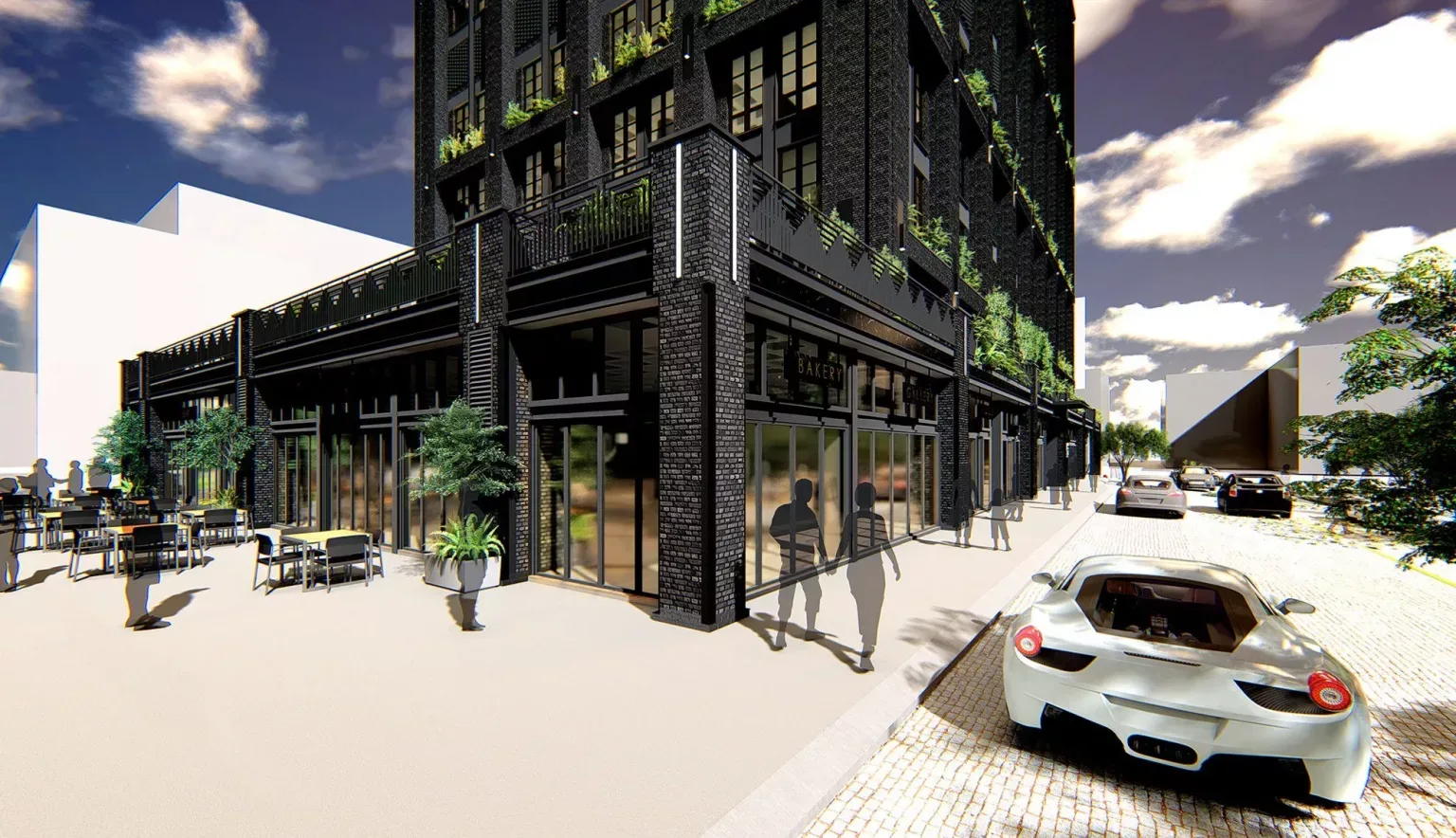With a hands-on approach to all projects, Daffonchio Architects is looking to expand its reach abroad as it continues to deliver landmark designs in Johannesburg and Cape Town.
THE QUALITATIVE ARCHITECT
Since I was a child, I have always been fascinated by construction and beautiful design,” muses Italian architect Enrico Daffonchio.
“I was exposed to an architectural studio environment when I was 10 years old or so, when a friend’s dad who was an architect used to give us small tasks such as colouring up plans.
“My decision to set up my own firm was therefore not a business decision, but rather a case of finding a path that I enjoyed very much. Being an entrepreneur rather than following a corporate career I think is just what suits me best.”
In 1996 Daffonchio Architects was born.
Based in Johannesburg, South Africa, today its work covers not only its home city but also Cape Town, Dubai and Milan, the latter three combining to represent around 40 percent of its activities.
“Our home market is still tremendously exciting,” Daffonchio continues. “The Sub-Saharan Africa region is always more active than, say Europe, because so much infrastructure is still lacking.
“I love the variety of opportunities that this region offers. The tourism sector provides opportunities to design more hedonistic projects, while the need for mass housing poses interesting challenges in sustainability and urban design. We are based in the Johannesburg-Pretoria area which is one of the world’s megacities, and this is very exciting, as urban regeneration opportunities are enormous and well incentivised.”
The company’s move into a newly regenerated green building is reflective of its approach to design and the promotion of a more sustainable built environment.
For example, its recent project at 78 Corlett Drive in the Melrose North area of Johannesburg is ground-breaking in many ways, not least because it has achieved a Green Building Council 6 Star Rating and Net Zero Carbon accreditation.
It is the first office development in Africa to be awarded such a status, fitted with electric car charging stations, full cyclist facilities, passive solar shading design and a full photovoltaic array.
“We worked on this for Legaro Properties, and it is an important milestone for us because as well as the green credentials, it is making an above average return for the developer,” adds Daffonchio.
“It is a beautiful building too, and people seem very happy working in its environment, so it is all-round a project we are very proud of.”
The Founder is quick to point out that the company puts equal effort and emphasis on quality and sustainability into all of its projects, its pipeline of completed works demonstrated such a commitment.
An ongoing development, also in Johannesburg, is The Bank in Rosebank.
“This is a great story because it rolls together urban regeneration, sustainability, mixed-use, a private-public space interface, landscaping and more,” Daffonchio continues. “It is a very articulate project that I feel will uplift an area that needs more considered developments, at a time where generic towers are being piled next to one another.”
The Bank is far from a generic tower. Spanning 12 storeys and around 14,300 square metres, the project involves expanding on the structure of the current bank building while retaining its character.
The ground floor houses retail space and a restaurant, as well as a reception area for the hotel which occupies the other 11 storeys along with offices.
Again, sustainability is front and centre of the design. The building predominantly uses renewable energy from rooftop solar panels and a heat recovery system which utilises waste heat from the HVAC system to heat water for the hotel.
This, as with all Daffonchio Architects’ projects, is the result of a highly personalised way of doing business inspired by the Founder.
“We are a boutique firm with only 20 architects in total, all highly talented and skilled, all capable of handling all the aspects of a project,” Daffonchio explains. “I chose a qualitative growth path rather than a quantitative one – I would not enjoy running a practice with hundreds of architects. This allows me to have a personal work relationship with each of our clients.”
It also enables the company to execute a wide range of projects, from luxury homes and urban regeneration schemes to off-grid office campuses and large residential and mixed-use schemes, its architects provisioned with a real-world approach to training and development.
“We look for talented and intelligent young people and then train them internally in technical, legal and design skills,” Daffonchio adds.
“I encourage getting a ‘sense of the world’ rather than becoming ‘experts in architecture’, and by this I mean that a good architect must understand the global socioeconomic and cultural realities, and not just be great at our profession. I believe that the more an architect is interested in the reality outside the profession, the better.”
It is an outlook which has stood the company in good stead for more than two decades, the next chapter of its story very much centred around broadening its horizons in other parts of the world.
The UAE is a particularly exciting proposition for Daffonchio.
“Yes, I am very interested in the UAE because I feel that, while the financial muscle of the area is phenomenal, so much could be improved in urban design and architectural thinking,” he says.
“I feel that we could challenge the way things are done and be very competitive there. We have started our first project and we are definitely looking for more opportunities there.”
And Daffonchio is confident his architects can live up to a global billing, his concluding remarks restating his confidence in the team he has built up since building the business in 1996.
“In truth, I constantly benchmark our firm with the leaders in the region and in the world, trying to match and exceed them in every aspect,” he says. “So, while I don’t know if we are better or different, we certainly have a constant tension towards excellence.”
































